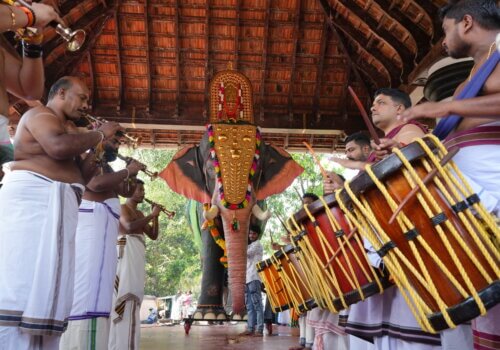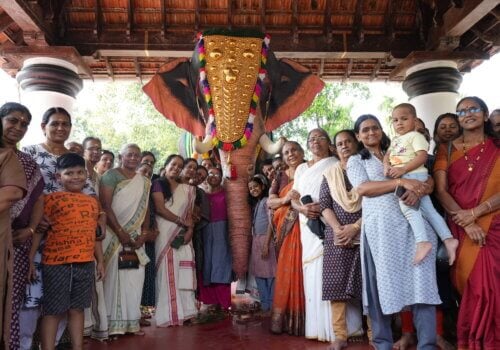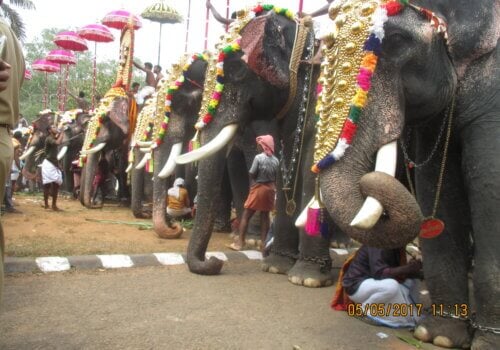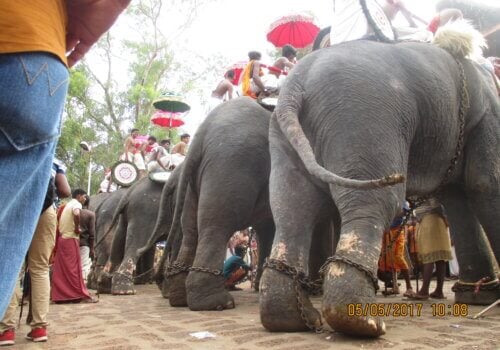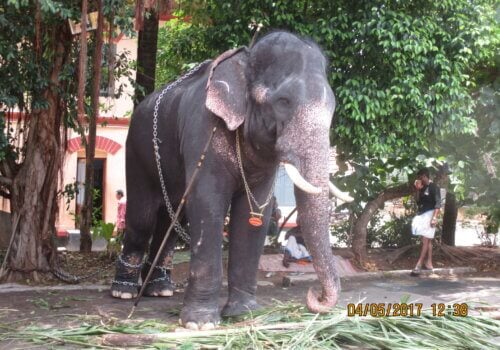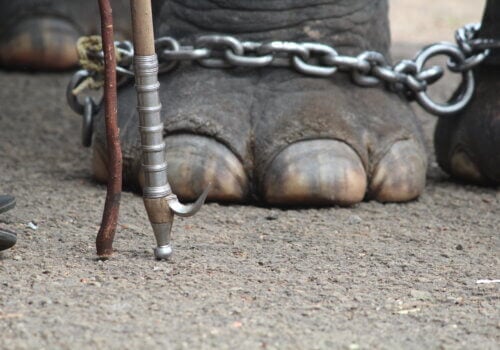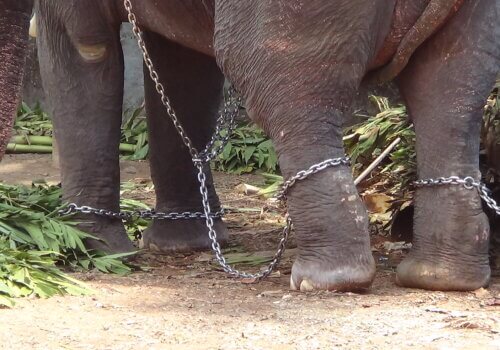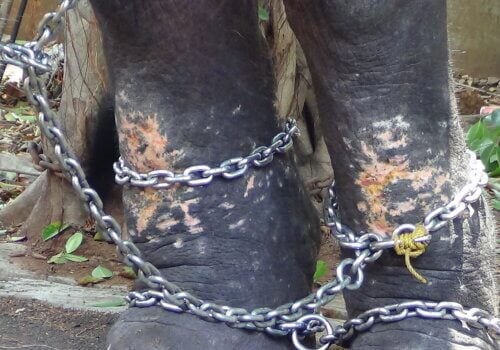After nine elephants in a span of ten days attacked and killed five humans, injured many others or damaged property at temple and mosque events in Kerala, PETA India is sending letters offering to donate an innovative lifelike mechanical elephant to all of the temples and mosques involved, so long as they agree to send the troubled elephants to sanctuaries where they can live unchained, without weapons and in the company of other elephants and refuse to hire or keep elephants in the future.
Real Elephants Suffer During Festivals and Processions – PETA India to Officials
In these letters, PETA India notes that using real elephants in festivals and processions causes these animals severe physical and psychological stress from loud music, traffic, firecrackers and other commotion. PETA India also states that the animals become upset from being controlled through painful and restrictive methods, such as chains and beatings.
Dangerous Recent Incidents Involving Kerala’s Captive Elephants
The following incidents have occurred in February 2025:
- An elephant named Chirakkal Ganesan brought to Painkannikkal Bhagavathi Temple in Chittattukara, Thrissur became aggressive, stabbed multiple people with his tusks on a multi-kilometer rampage, and killed one man.
- An elephant named Vallamkulam Narayanankutty ran amok, became violent, attacked the mahout and trampled him below his legs to death, caused severe panic, destroying vehicles and shops during an offering ceremony associated with Koottanadu Shuhada Makham (mosque) in Palakkad.
- An elephant named Govindan Kutty brought to Mariyamman Devi Temple festival in Nilambur became aggressive, charged uncontrollably, throwing aside vehicles in his path and caused rampage that lasted for 1.5 hours.
- Elephant Peroor Shivan turned violent during Pattambi Nercha organised by the Pattambi Mosque. The safety of the public was put in jeopardy as chaos erupted in the area due to the panic created by Peroor Shivan and the people on the road running to save themselves.
- Elephant Thadathavila Shiva became aggressive and caused panic for an hour during a temple festival in Irinjalakuda.
- An elephant named Kannan brought for the Unniyanthiran Kavu Temple festival in Nilambur, ran amok, fell into a broken well and was later rescued with the help of a mechanical excavator.
- At the Perumpilavu Temple in Kunnamkulam, an elephant brought for a procession turned aggressive and ran amok.
Two elephants, Peethambaran and Gokul, brought for the Sree Manakkulangara Bhagavathy Temple festival in Koyilandy became upset by firecrackers, started fighting, leading to chaos and resulting in three devotee deaths and a stampede that injured many.
Mechanical Elephants Allow Kinder, Safer Events
PETA India ignited the sympathetic movement of replacing live elephants for events at the beginning of 2023 and now, at least thirteen mechanical elephants are used in temples across south India, of which PETA India was involved with donating eight such life-size mechanical elephants to temples in Kerala and Karnataka in recognition of temples’ decisions to never to own or hire live elephants. These mechanical elephants are now used to conduct ceremonies at their temples in a safe and cruelty-free manner, helping real elephants stay with their families in the jungle.
What is a Mechanical Elephant?
Mechanical elephants are 3-meter-tall and weigh 800 kilograms. They are made with rubber, fiber, metal, mesh, foam, and steel and run on five motors. A mechanical elephant looks, feels, and can be used like a real elephant. It can shake its head, move its ears and eyes, swish its tail, lift its trunk, and even spray water. They can be climbed upon, and a seat can be affixed on the back. They can be operated simply by plugging and playing with electricity and taken through the streets. They are mounted on a wheelbase, allowing them to be moved and pushed around for rituals and processions.
Why Real Elephants Must Never Be Used for Performances
Elephants are extremely clever, active, and gregarious wild animals. In captivity, they are trained to be used in processions by forcibly controlling them into obedience, including beatings and the use of weapons to cause suffering. Many elephants held captive in temples and other places suffer from extremely painful foot problems and leg wounds due to being chained to concrete for hours on end. Most are denied adequate food, water, veterinary care, and any semblance of a natural life. Under these hellish conditions, many elephants become intensely frustrated and lash out, often killing mahouts or other humans.
According to the Heritage Animal Task Force, captive elephants killed 526 people in Kerala in a 15-year period. Recent media reports indicate that activists in Kerala have documented over 60 incidents of negative encounters with elephants during Pooram Parades over the past two seasons, resulting in numerous human injuries, some of which have been fatal.
